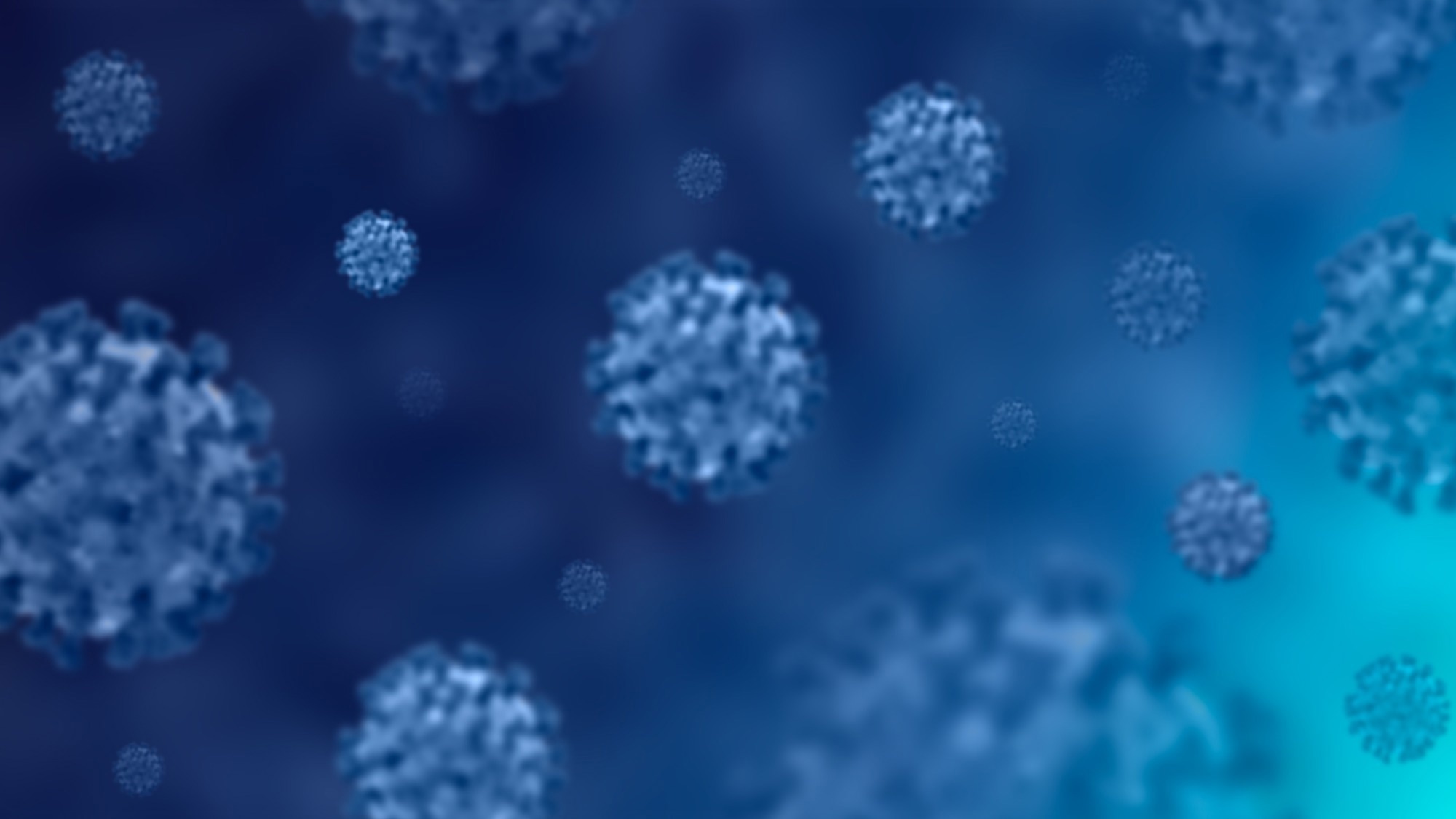In a cohort study published in Nature Communications, researchers from the United States of America investigated the role of type-2 interferon (IFNγ) in antiviral immunity against severe acute respiratory syndrome coronavirus 2 (SARS-CoV-2) in murine models.
They found that an IFNγ response pre-established within the lungs may protect against SARS-CoV-2 infection, indicating the potential use of IFNγ as a prophylactic agent in managing coronavirus disease 2019 (COVID-19).
 Study: Bacterial-induced or passively administered interferon gamma conditions the lung for early control of SARS-CoV-2. Image Credit: PrinceJoy/Shutterstock.com
Study: Bacterial-induced or passively administered interferon gamma conditions the lung for early control of SARS-CoV-2. Image Credit: PrinceJoy/Shutterstock.com
Background
COVID-19, caused by SARS-CoV-2, primarily infects lung epithelial cells expressing angiotensin-converting enzyme 2 (ACE2). While interferons (IFNs) of types 1 and 3 are known for their role in antiviral response, the role of type-2 IFN (IFNγ), especially in SARS-CoV-2 infection, is poorly understood. IFNγ is a cytokine immune cells produce in response to bacterial infection to combat intracellular pathogens.
Although IFNγ is not typically required for pulmonary viral resistance, studies in mice and immunocompromised patients indicate that recombinant IFNγ treatment may be useful against viral infections, including that of SARS-CoV-2.
Evidence on therapies acting through IFNs has highlighted that timing of treatment relative to viral exposure is critical, often requiring pre- or early post-exposure administration.
Interestingly, an ongoing IFN response to existing or recent infection, such as lung infection with Mycobacterium bovis BCG (short for Bacillus Calmette-Guérin), has shown protection against SARS-CoV-2 in animal models.
Therefore, researchers in the present study explored the mechanisms underlying the protection offered by a concurrent bacterial infection against SARS-CoV-2 while shedding light on the potential role of IFNγ in the process.
About the study
In the present study, wild-type (WT) B6 mice were inoculated intravenously (iv) with BCG or phosphate-buffered saline (PBS, control) 40–45 days before they were intranasally challenged with SARS-CoV-2 strain B.1.351. On day 3, lungs were isolated, and viral titer was measured in the homogenate using TCID50 (short for 50% tissue culture infectious dose) assay.
Additionally, single-cell RNA sequencing (scRNAseq) was performed on the isolated lung cells. Cell clusters were analyzed using Seurat clustering and flow cytometry.
After 28 days of BCG vaccination, cytokine staining was performed on lung cell suspensions. Similar experiments were performed in Ifngr1−/− mice to understand the effect of IFNγ signaling on protection.
Additionally, to understand whether IFNγ signaling in the non-hematopoietic compartment is enough for BCG-driven protection, Ifngr1−/− mice were irradiated, and their bone marrow was reconstituted with WT cells.
Actively infected cells were identified by staining lung tissue for the SARS-COV-2 nucleocapsid and using in situ hybridization (ISH). Recombinant IFNγ was administered intranasally to WT or Ifngr1−/− animals two days before and one day after the SARS-CoV-2 challenge, and their lungs were analyzed on day 3.
Statistical analysis involved the determination of p-values using Student’s t-test, Mann-Whitney test, one-way analysis of variance (ANOVA) with Tukey’s post-test, or Kruskal-Wallis test with Dunn’s post-test.
Results and discussion
Three days after the SARS-CoV-2 challenge, the lungs of WT BCG animals showed a significantly reduced viral load compared to controls. While the lungs of BCG-treated animals were enriched in T-cells, those of control PBS-treated animals were enriched in fibroblasts.
scRNAseq data showed that the lungs of BCG-treated animals had more differentially expressed genes (related to inflammation, antiviral immunity, and IFN signaling) in macrophages and dendritic cells compared to controls.
While levels of other IFNs did not vary between the two groups, IFNβ and IFNγ were significantly higher in BCG-treated animal samples than controls. T-cells and natural killer cells were the major sources of IFNγ.
No reduction in viral load was observed in Ifngr1−/− mice (without IFNγ receptor), suggesting that IFNγ signaling is required for BCG-induced protection against SARS-CoV-2. Also, BCG was found to protect severe-disease mice models from the virus, but animals treated with anti-IFNγ did not receive significant protection, confirming the role of IFNγ.
BCG-treated WT mice also showed a reduced inflammatory cytokine response irrespective of the presence of IFNγ. The study shows BCG-induced IFNγ present during the viral challenge controls viral load rather than SARS-CoV-2-related inflammation.
Studies conducted on irradiated and reconstituted Ifngr1−/− mice showed that IFNγ signaling in non-hematopoietic cells is sufficient for BCG-induced protection against SARS-CoV-2.
Bronchiolar epithelial cells, macrophages, and pneumocytes were most immunoreactive to the SARS-CoV-2 nucleocapsid. Findings suggest that BCG-induced IFNγ controls SARS-CoV-2 infectivity and/or replication within the epithelial cells. Data showed that IFNγ induced the expression of IFN-regulated proteins by pulmonary epithelial cells, including a viral restriction factor.
Notably, WT mice administered with recombinant IFNγ showed reduced or no viral load, suggesting that pre-existing IFNγ responses can control SARS-CoV-2 infection and/or replication across epithelial cells, thereby protecting the host from related tissue damage and immunopathology.
Conclusion
The present study's findings suggest that bacterial infections, particularly intravenous administration of BCG, which specifically elicit IFNγ responses in the lung, could limit SARS-CoV-2 infection.
They highlight the prophylactic potential of intranasally administered recombinant IFNγ in offering protection against SARS-CoV-2 infection for improved outcomes in COVID-19 management and encourage further research.